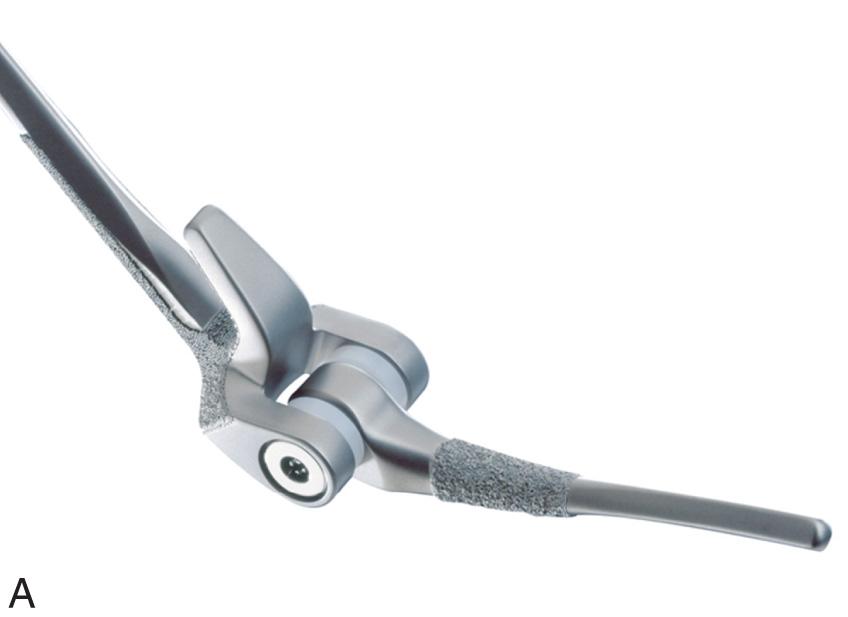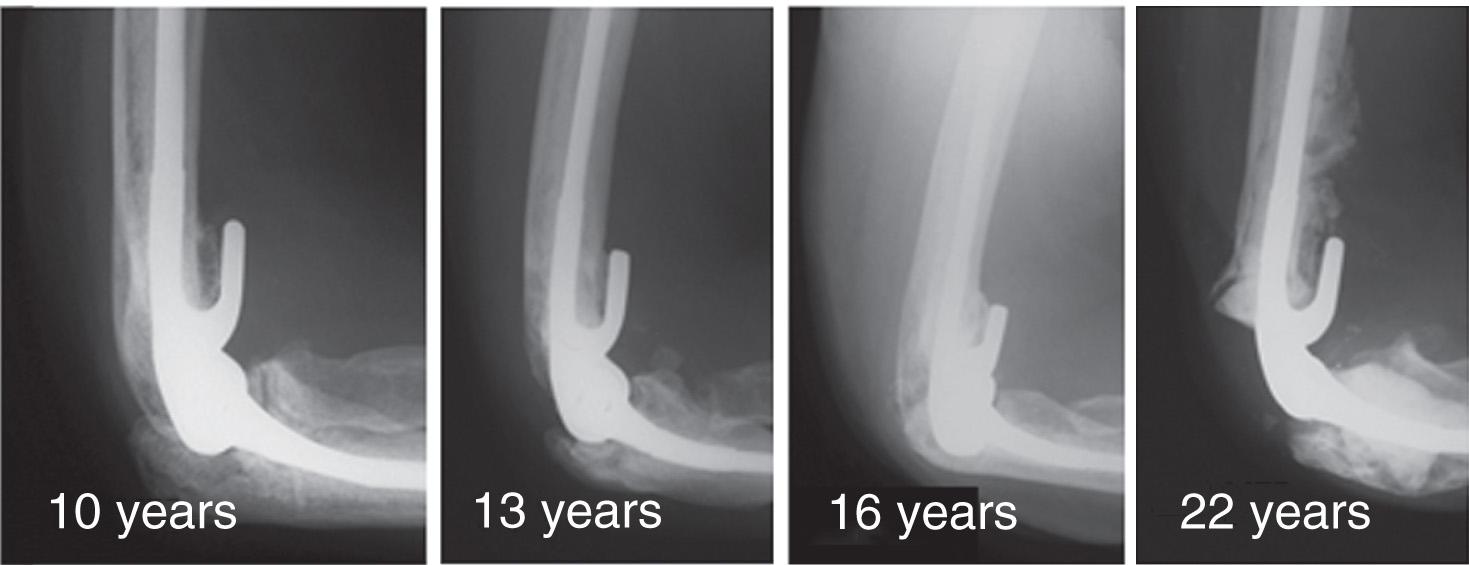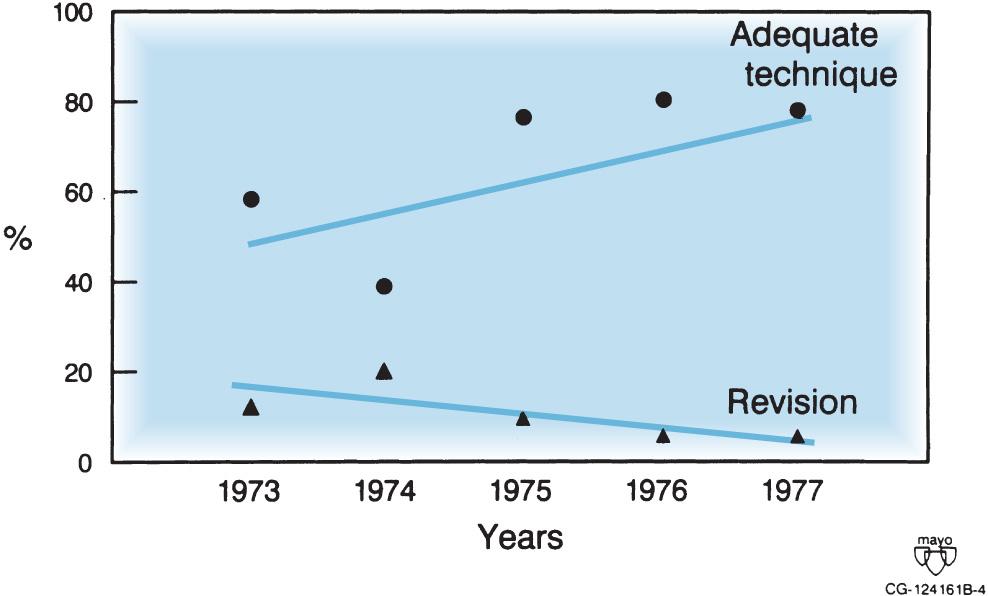Physical Address
304 North Cardinal St.
Dorchester Center, MA 02124
As noted in Chapters 85 and 86 , the concepts underpinning the design and results of total elbow arthroplasty are improving with increased basic knowledge of elbow mechanics, better designs, and greater surgical experience. In this chapter the general principles of established and improved designs are described; the concepts—details for specific designs and techniques—are described here as well as in Chapters 88 and 89 . Specific technique considerations and results according to the disorder are discussed in Chapter 91, Chapter 92, Chapter 93, Chapter 94, Chapter 95, Chapter 96, Chapter 97, Chapter 98 .
Today, in the United States, several semiconstrained elbow replacements are commercially available, including the Coonrad-Morrey and Nexel (Zimmer, Warsaw, IN), Latitude (Tornier, Edina, MN), and Discovery (Don Joy Orthopaedics, San Diego, CA) implants ( Fig. 90.1 ). With the exception of the Coonrad-Morrey device, discussed in the following chapters, there is little documentation of the outcomes for the other devices. The GSB III was a popular linked device in Europe and the results have been reported, but it is no longer available.

The reason for continuing to use a semiconstrained linked implant is simple: all currently used designs work well, are reproducible, and can address a broad spectrum of disorders. All linked devices and similar implants are distinctly different, both conceptually and clinically, from the original, fully constrained articulated devices ( Fig. 90.2 ).

In today's linked prostheses, the one feature in common is that the ulnar component is coupled to the humerus with angular and rotatory laxity of 5 to 10 degrees. The theoretical advantage has been confirmed by laboratory data demonstrating that the articulation tracks within the limits of its tolerance ( Fig. 90.3 ).

As noted in Chapter 86 and as clinical experience suggests, the flange on the humeral component is effective in reducing stresses on the bone-cement interface and lessens the frequency of loosening ( Fig. 90.4 ). Documentation of improved clinical results attests to the effectiveness of the semiconstrained linked design. a
a References .
Of particular note is that the linked implant dramatically broadens the indications for reconstructive surgery while limiting the reliability of the unlinked devices. The enhanced stability supplied by the coupling is provided without transmission of excessive stress to the bone-cement interface with the semiconstrained design.

Experience with the Coonrad-Morrey implant clearly demonstrates the value of surface treatment. Today, all commonly applied devices have a plasma spray on both the humeral component and the ulnar component (see Chapter 86 ). This is the surface currently used by all marketed designs.
There is considerable variation in the stem cross-sectional design among the unlinked devices. Clinical and experimental information indicates a shorter 10-cm humeral device is effective for both primary and traumatic applications.
There are five considerations in common to all elbow replacements:
exposure attempting to leave the triceps intact when possible
decompression and protection of the ulnar nerve
soft tissue balance
effective cementing technique ( Fig. 90.5 )

proper placement of the implants, especially rotatory accuracy
The indications for semiconstrained linked joint replacement have not changed in 25 years. These include patients with rheumatoid arthritis in whom medical management fails regardless of the degree of bone or soft tissue present or destroyed. Primary or revision procedures with minimal or extensive bone loss are also amenable to management by linked devices. The stiff, deformed, or unstable elbow may also be effectively managed with linked devices. The most rapidly growing indication is acute fracture. However, traumatic indications include acute fracture, posttraumatic arthritis, nonunion, gross instability, and the stiff or fused joint. These topics are covered in Chapter 92, Chapter 93, Chapter 94, Chapter 97, Chapter 98 . In all instances, accurate placement of the implants and soft tissue release are essential technical requirements.
As for any total elbow arthroplasty, the absolute contraindications for a linked arthroplasty are active infection, inadequate soft tissue protection, and the lack of adequate motor muscle power to flex the elbow to ensure proper functioning of the device. Relative contraindications are lack of patient adherence. Primary degenerative joint disease is also a relative contraindication because patients with this disease are usually younger and active, and alternative selections are effective (see Chapter 95 ). High demand and a dysfunctional hand are also relative contraindications for total elbow arthroplasty.
Become a Clinical Tree membership for Full access and enjoy Unlimited articles
If you are a member. Log in here